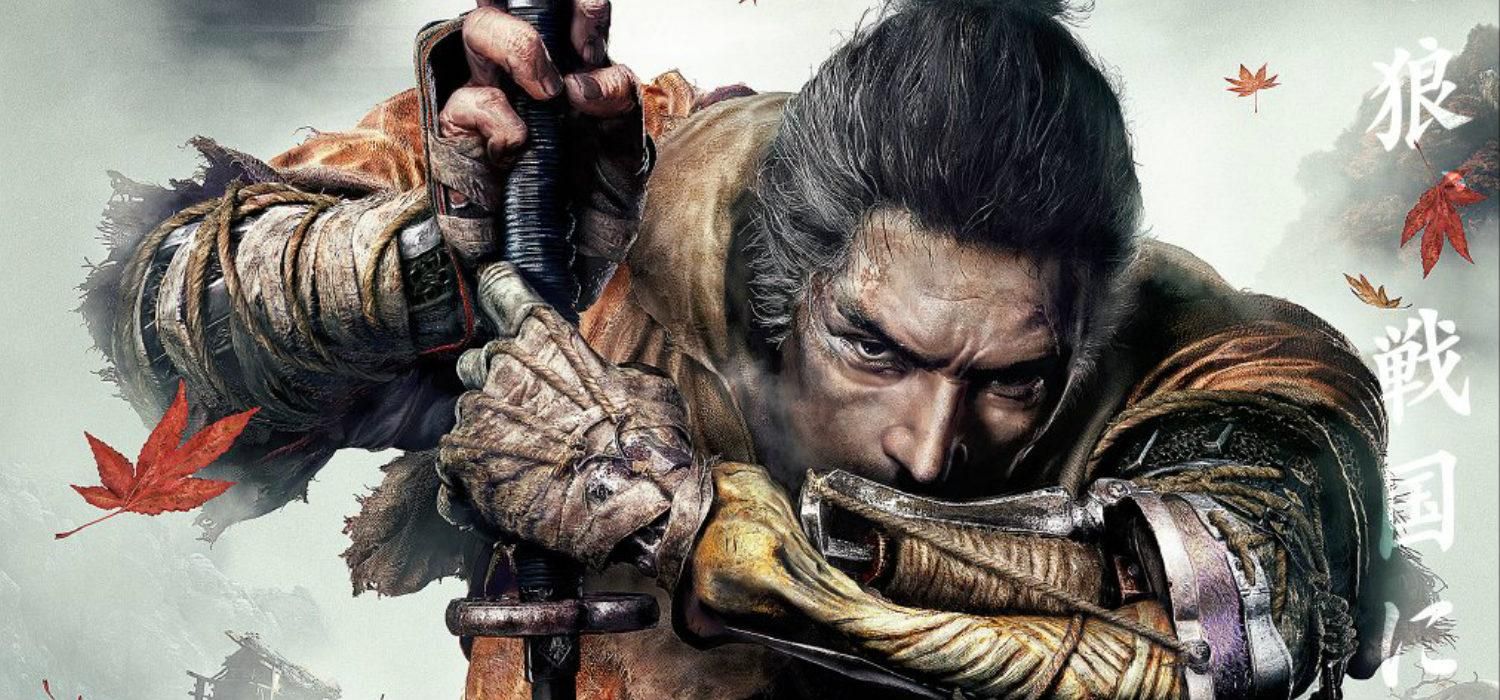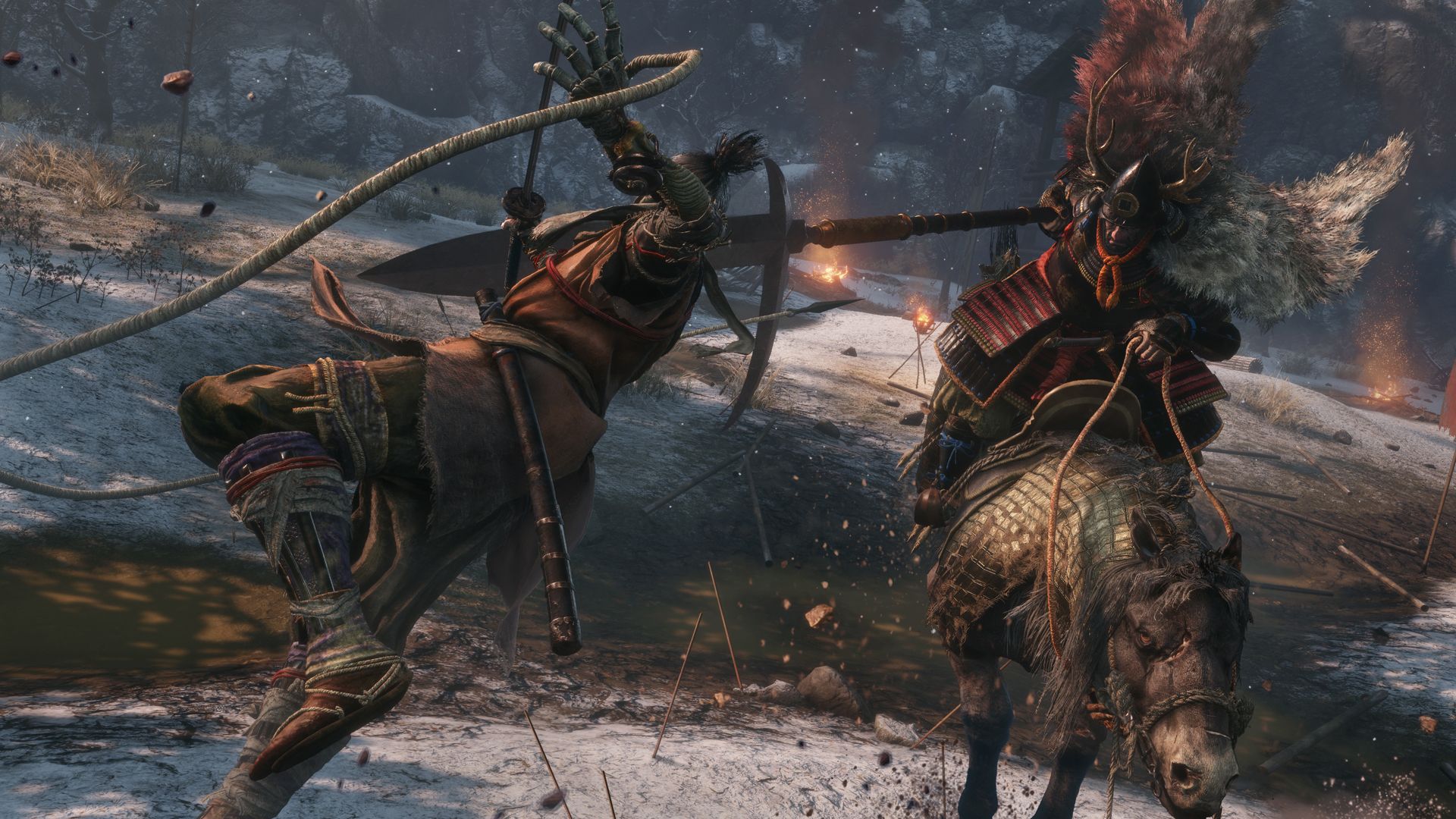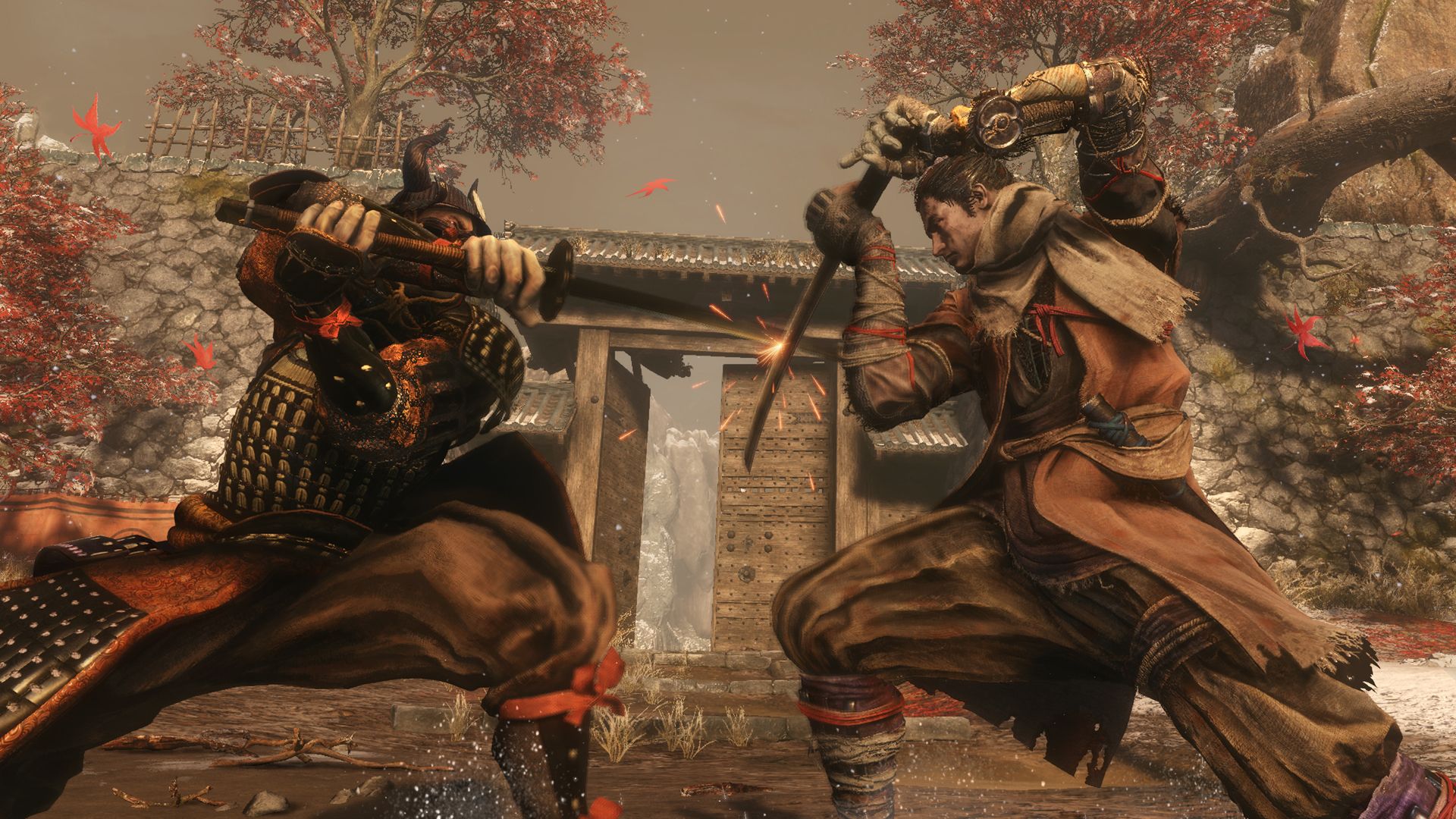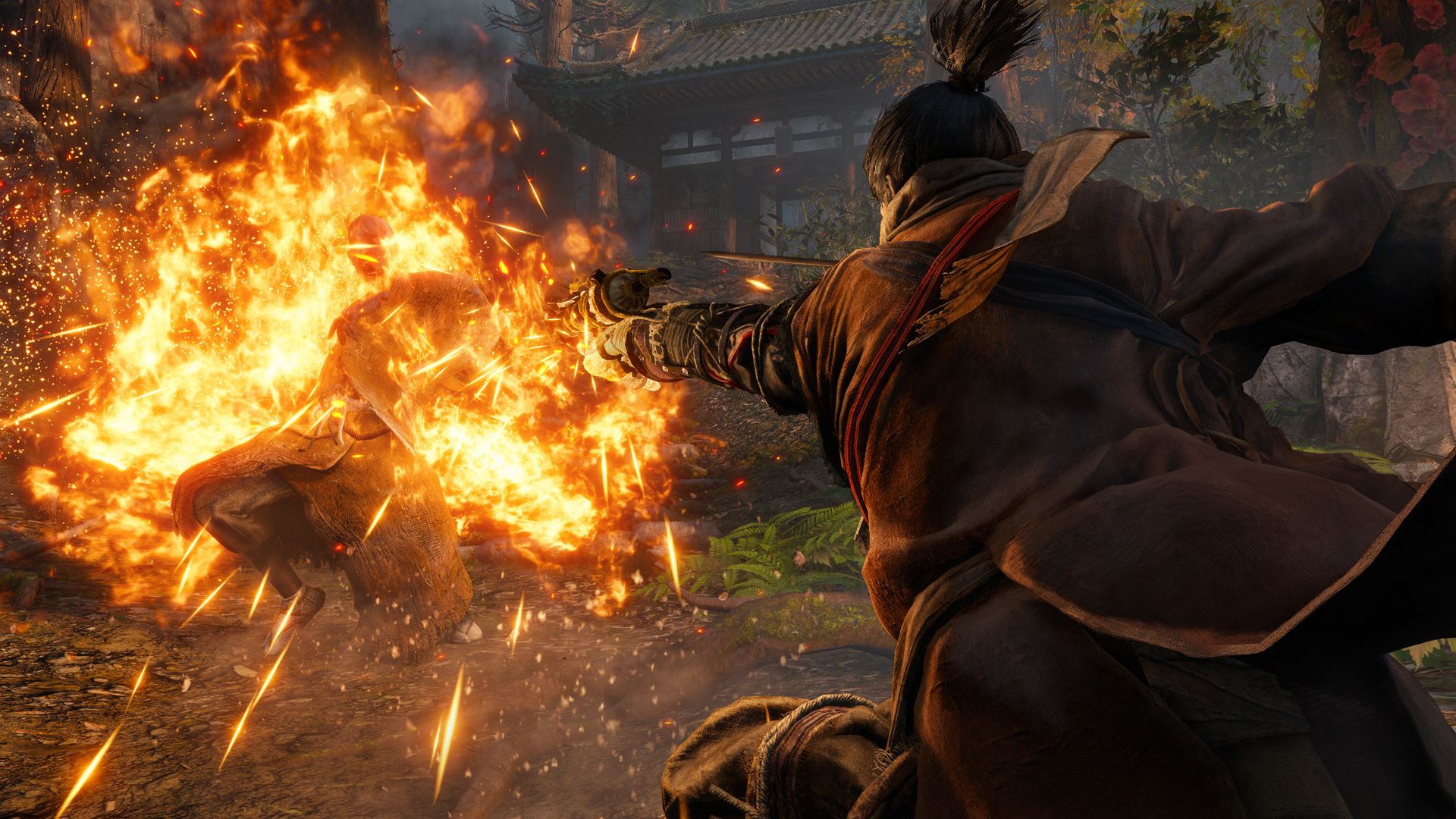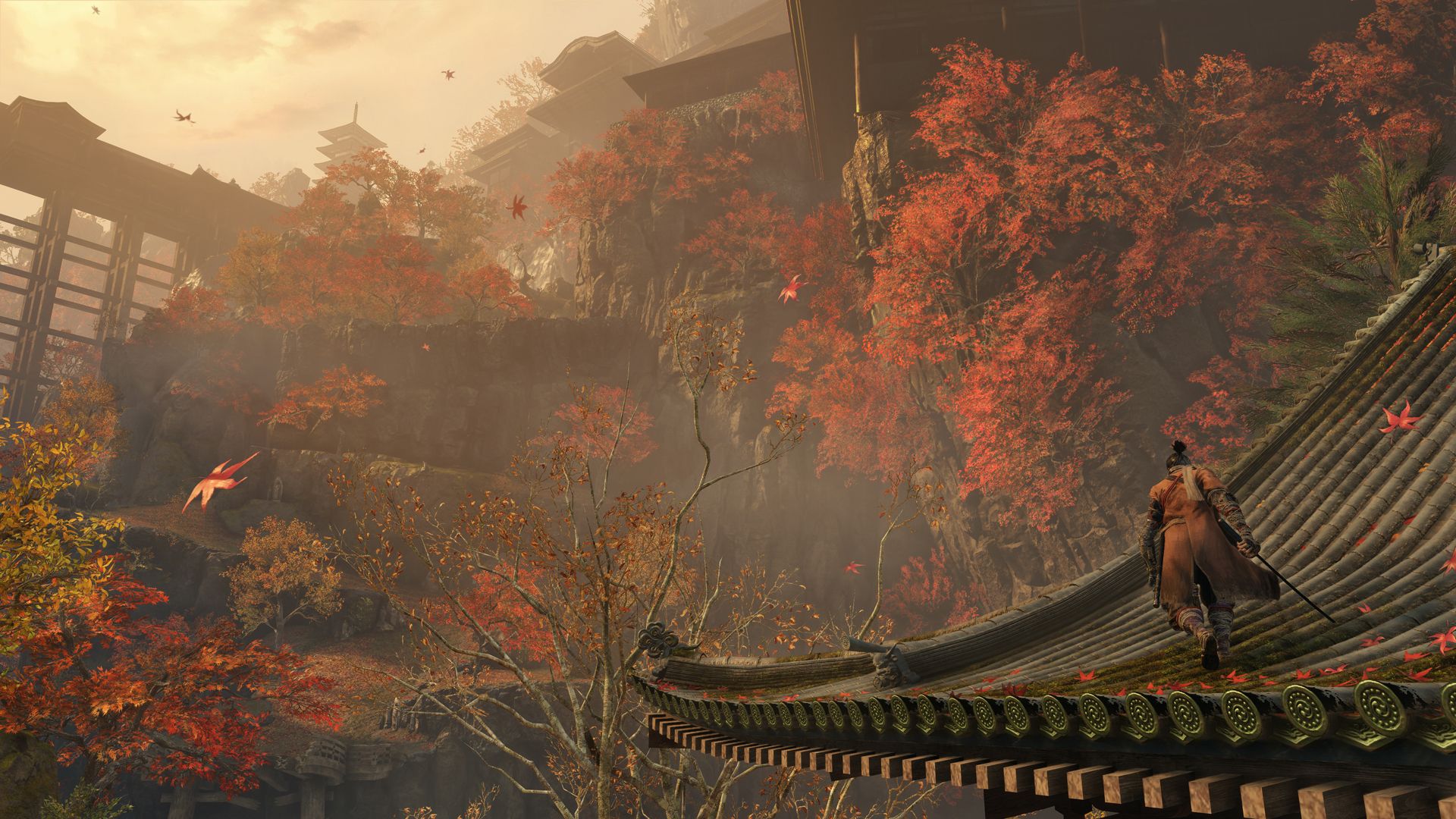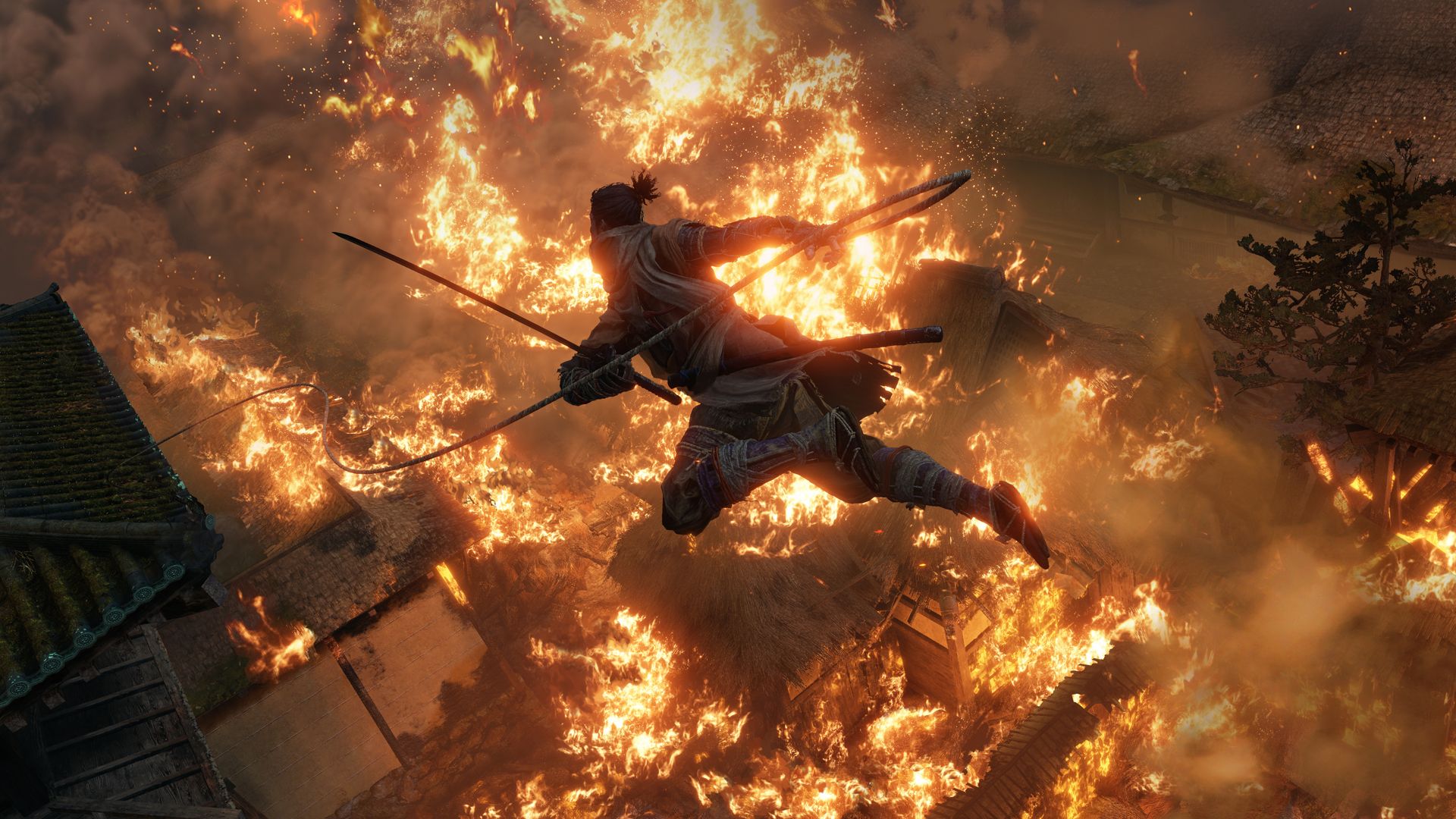With FromSoftware having closed the book on Dark Souls--a series that has essentially crafted an entire genre of its own--naturally that might have led many fans to speculate on what exactly would come next from the studio. Given how the Souls series and Bloodborne have come to define FromSoftware in the past decade, it's inevitable that comparisons will be drawn from those game to the studio's upcoming title, Sekiro: Shadows Die Twice, in the hopes that it will build off what fans have loved from the Souls games. While Sekiro very much seems to carry some of the DNA that made the Souls games so engrossing to play over the years, it also is its own animal entirely that shows FromSoftware's willingness to not just challenge players, but also to challenge themselves by working with new gameplay mechanics entirely.
In a preview event with Activision, we got to play around two-and-a-half hours of Sekiro: Shadows Die Twice in a hands-on session, giving us a feel for FromSoftware's latest title, how it plays, and to delve deeper into its world and setting drawn from ancient Japan. While this session was only a small taste of what the game has to offer, what I played was still enough to convince me that Sekiro will offer fans of FromSoftware's past titles what they are looking for in terms of challenging gameplay, but also breaks from the studio's mold by blending stealth action with hardcore combat.
[pullquote]"Sekiro will offer fans of FromSoftware's past titles what they are looking for in terms of challenging gameplay, but also breaks from the studio's mold by blending stealth action with hardcore combat."[/pullquote]
From starting the demo and working my way through a couple of its environments, it's clear that if you're coming to Sekiro: Shadows Die Twice having played any of FromSoftware's "Soulslike" titles, whether that's Demon's Souls, Dark Souls, or Bloodborne, you'll surely find that many of those games' signature elements have been carried over into the studio's latest. Yes, Sekiro is incredibly challenging--I don't even want to say how many times I died during the course of the demo--and while it shares a lot of common threads with the Souls games that came before it, it also brings in plenty of new elements that give it a distinct style to call its own.
By far the most notable element of Sekiro's combat comes from the use of its "posture" system. Aside from the traditional health bars that we've seen from the Souls games, when engaging in combat in Sekiro, the more immediate goal for players is to whittle down their enemy's posture in order to land a devastating "killing blow." Posture is signified in a meter above the enemy's head, and as players successfully land blows or block attacks, that causes the enemy's posture meter to decrease. Eventually, depleting the meter will stagger an enemy and leave them open to a killing blow that will either deal massive damage to the foe at hand (in the case of boss enemies) or take them out entirely (for the smaller enemies you'll encounter in each area).
[pullquote]"When engaging in combat in Sekiro, the more immediate goal for players is to whittle down their enemy's posture in order to land a devastating 'killing blow.'"[/pullquote]
While at first this might just sound like a slight alteration of traditional Soulslike-style combat, the posture system in Sekiro really does alter the rhythm of engaging in combat entirely. Most importantly, this new system forces players to have to be on the offensive, as an enemy's posture will eventually start to regenerate if you wait too long to attack them, making it much harder to "cheese" enemies. In a way, it reminded me of how Bloodborne encouraged players to be aggressive by giving them the opportunity to regain health after getting attacked.
But in Sekiro, that sense of aggression in combat feels weighted by the fact that players have to be deliberate not just with their attacks, but also in their movement and timing. Blocking, in particular, is a crucial skill that players will have to master in Sekiro in order to have any chance of surviving, along with getting the timing for when to strike at the right moment. Blocking right before an enemy lands an attack will cause them to stagger, giving players an opportunity to land a few more hits or finally opening that enemy up to a killing blow that will take them down.
At times, this balance of attack and timing makes Sekiro feel less like a traditional Soulslike game and at times more like a fighting game; precision and knowing when to strike is what will carry players through in Sekiro more than just pure aggression. I quickly found that just relying on attacks and dodging won't get you as far as learning the dynamics of offense and defense in Sekiro's combat system. While I really had to wean myself away from constantly dodging enemy attacks (as I have done in the Souls games) and learn to block, it didn't take me too long to grasp what Sekiro was trying to teach me; learn when to strike, not how often.
[pullquote]"Precision and knowing when to strike is what will carry players through in Sekiro more than just pure aggression."[/pullquote]
Outside the actual mechanics of combat itself, Sekiro also gives players a much greater sense of mobility and movement options than we've ever seen before in From Software's recent titles. That of course starts with the fact that you can jump--not a huge deal compared to most other games, but here it makes all the difference--and that players now have access to a grappling hook to access different vantage points. As much as I enjoyed the sense of familiarity that Sekiro gave me from playing something like Bloodborne, the amount of freedom of movement and verticality that Sekiro offers by comparison pretty much made it feel like an entirely new game.
The grappling hook in particular really became the tool that I came to rely on the most as I explored one of the opening areas, the Ashina Outskirts. Set among a mountaintop Japanese village with various buildings and rooftops to grapple on to, having the ability to quickly and easily cling to the top of a building and scout out enemy locations pretty much completely changed how I approached entering a new area. While Sekiro still has plenty of surprises in store for players around every corner, having such an expanded range of movement not only made sense with the abilities of the game's ninja-like main character, but also served to make Sekiro feel just as much like a stealthy action game as it does a Soulslike game.
[pullquote]"Seeing FromSoftware work within a setting that perfectly merges ancient Japan with fantastical horrors only makes me more excited to uncover [Sekiro's] world."[/pullquote]
While I came into Sekiro: Shadows Die Twice expecting it to be a challenge--something that most certainly turned out to be true from the time that I played--what I didn't expect to come away with was admiring just how visually distinct and vibrant Sekiro's world is. Though it has plenty of moments of darkness and grotesque enemies to fight, there are also genuine sights of beauty that I couldn't help but try to spend time with to explore and appreciate them further. As much as I loved the Gothic and Eldritch horrors of Bloodborne's setting, seeing FromSoftware work within a setting that perfectly merges ancient Japan with fantastical horrors only makes me more excited to uncover its world.
Though Sekiro was a game that I had slight hesitations towards jumping into given that FromSoftware's games can be as much infuriating as they are enjoyable to play, I can't help but admit that Sekiro might have just jumped towards the top of my list of games that I am most anticipating on playing this spring. There is no denying that Sekiro will certainly be a challenge, as I only experienced a small selection of levels and couldn't work my way past a couple of the game's bosses, as they just kept crushing me over and over again during the preview session. I'm looking at you, Chained Ogre.
[pullquote]"I can't help but admit that Sekiro might have just jumped towards the top of my list of games that I am most anticipating on playing this spring."[/pullquote]
That said, despite those setbacks, it's hard to deny that Sekiro (so far) is shaping up to be yet another excellent title that bears FromSoftware's signature marks. While I clearly have a lot of work to do to measure up to the demands that Sekiro seems like it has from players, from what I played, I am more than willing to sit, learn, and listen.
Sekiro: Shadows Die Twice will release for PS4, Xbox One, and PC on March 22, 2019. For more on the game, you can also check out our upcoming hands-on gameplay footage and laugh as I tried to foolishly thwart death. If you're willing to take more punishment than I am, you can also pre-order the game on Amazon now before its release later this month.

